
This post is part of a series of posts on mentor texts I recommend for showing students how authors use the 6+1 Traits of Writing.
What is the voice trait?
The writing trait of voice is “the tone and tenor of the piece – the personal stamp of the writer, which is achieved through a strong understanding of purpose and audience”.
Ruth Culham (Traits of Writing Scoring Guide for Grades 3-8, 2010)
In her book 6+1 Traits of Writing Grades 3 and Up, I think Ruth Culham lets her own writing voice shine when she describes this trait. She says “it is the heart and soul of the writing, the magic, the wit, the feeling, the life and breath. It is flashes of spirit.”
The key features of a writer using the voice trait are:
- Establishing a Tone: The writer cares about the topic, and it shows. The writing is expressive and compelling. The reader feels the writer’s conviction, authority, and integrity.
- Conveying the Purpose: The writer makes clear his or her reason for creating the piece. He or she offers a point of view that is appropriate for the mode (narrative, expository, or persuasive), which compels the reader to read on.
- Creating a Connection to the Audience: The writer speaks in a way that makes the reader want to listen. He or she has considered what the reader needs to know and the best way to convey it by sharing his or her fascination, feelings, and opinions about the topic.
- Taking Risks to Create Voice: The writer expresses ideas in new ways, which makes the piece interesting and original. The writing sounds like the writer because of his or her use of distinctive, just-right words and phrases.
Mentor Texts for the Voice Trait
The voice trait can feel a little vague compared to other, more concrete traits such as word choice and conventions, but the best way to create clarity in the voice trait is to provide your students with wonderful mentor texts that have an obvious, clear voice. Below are some of the texts where I think the voice of the author jumps off the page in a way that your students can identify and learn from.
The Waterhole – Graeme Base
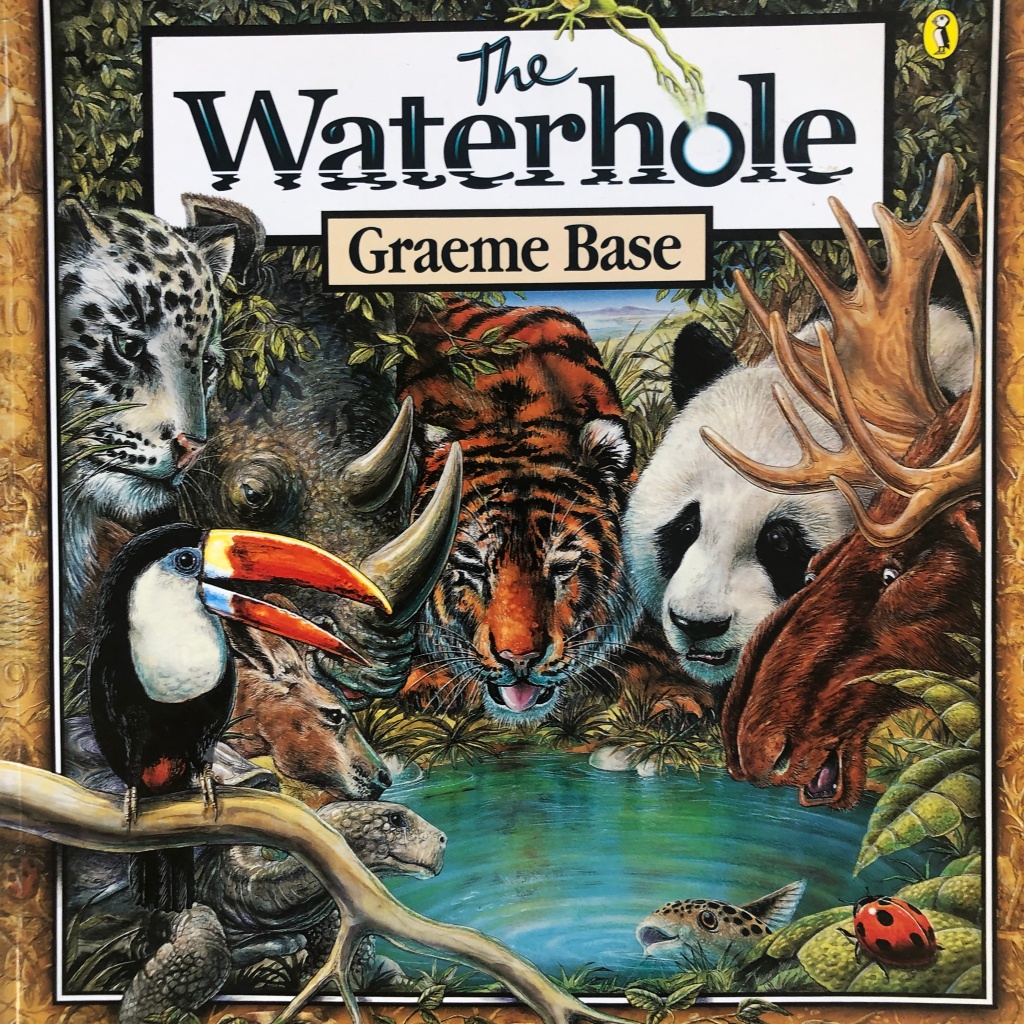
Establishing a tone – 10 different animals get a chance to establish a tone in this text. From the committee-forming, business-like ladybirds, to the wise and cautious snow leopards, Graeme Base conveys personality and life to each animal in only a few words. As readers we are compelled to read on to see how the next animal is portrayed as they react to the decreasing water supply.
Conveying the purpose/Creating a connection to the audience – This is a book with a strong message – it gets students thinking about water as a global resource, climate change and global warming, and the impact of diminishing resources on animals. But I think the beauty of it is that the book doesn’t preach these messages; It simply presents them in a form that the audience can easily connect to… interesting and unique animals across the world.
Taking risks to create voice – There’s no doubt Graeme Base has tried something new and different here. The text unfolds with a lot of layers – the narrative text that ties it all together, animal sounds and their English ‘translations’, as well as multiple features in the images that provide more meaning. Even the cut-out waterhole that gets smaller and smaller as each page turns could be a great way for students to explore unique, meaningful presentation techniques.

Edward the Emu – Sheena Knowles and Rod Clement
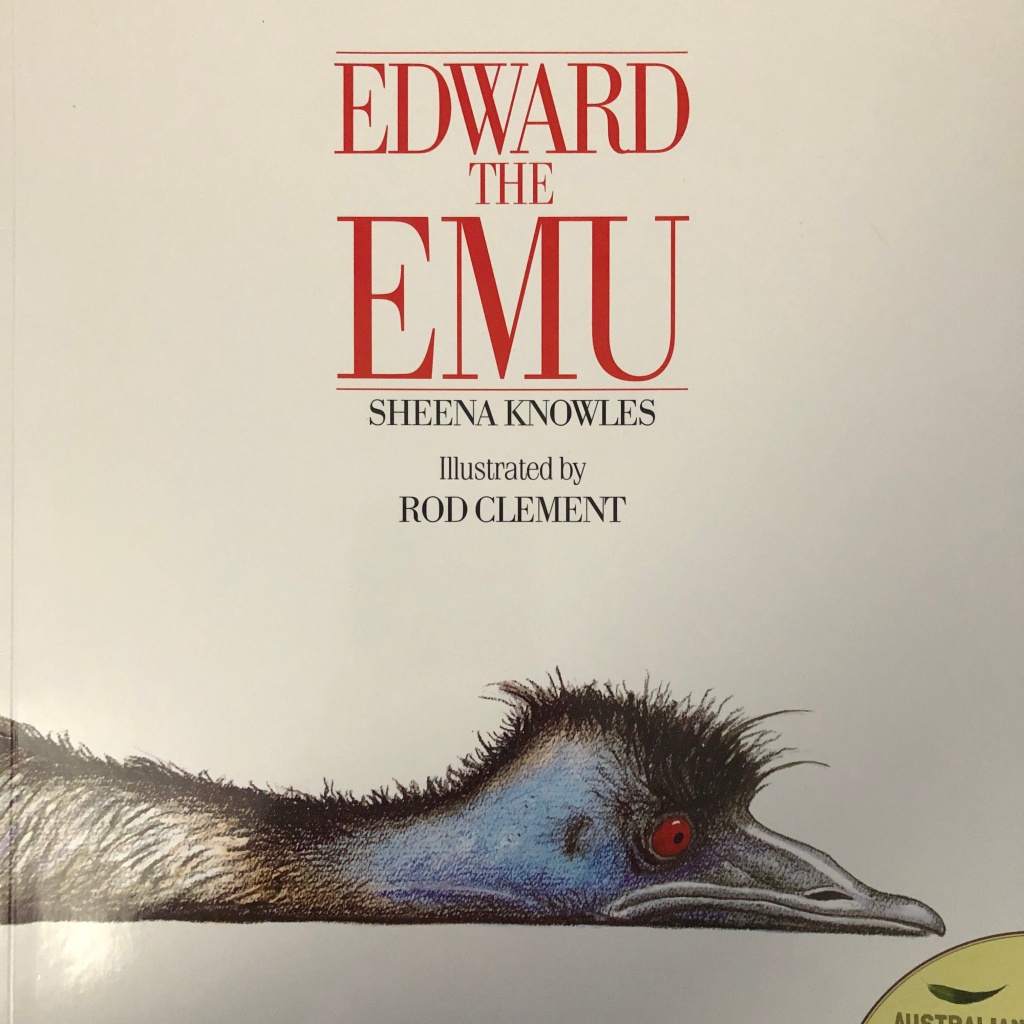
While written in third person, Edward the Emu, our main character, has a personality that leaps off the page. As readers we can easily infer his personality and thoughts from the careful descriptions… It is easy for the reader to immediately root for Edward from the very first page.
Establishing a tone – The protagonist in this book is energetic and passionate. Is it impossible for the reader not to get swept up in the excitement and enthusiasm of Edward the Emu.
Conveying the purpose – There is a very clear message coming through in this text (sometimes, we all feel like we want to be someone else, but there’s value in being yourself!). The mode chosen (a gorgeous, vibrant narrative) communicates this message very clearly and memorably as we see Edward wholeheartedly trying to be a seal, a lion and a snake in turn but learning that for some an emu is “the best thing I’ve seen since I came to the zoo!”.
Creating a connection to the audience – Because the message of the text is such a universal experience, it is easy to connect with.
Bonus: this text has a notes from both the author and illustrator at the end, in which they convey – in detail – how much they love the character Edward, and why. It would be a great discussion point to ask children how they think the author and illustrator wanted their main character to come across, and then compare what they actually said about it.
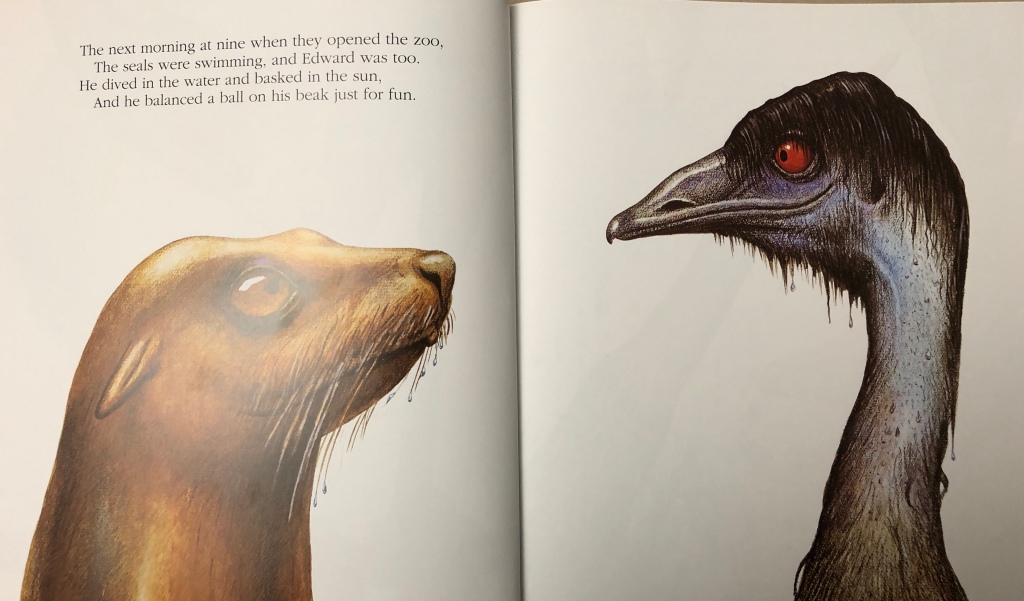
Cicada – Shaun Tan

Establishing a tone – The direct, matter-of-fact style of storytelling of this text is unique and compelling. Our titular character ‘Cicada’ is an office worker who is underappreciated and treated poorly but the Cicada never complains, it just explains. From the first page (‘Seventeen year, No promotion. Human resources say cicada not human. Need no resources. Tok! Tok! Tok!’) it is clear that the author knows a story that needs to be told and wants to tell it in a way true to the character.
Taking risks to create voice – This text is immediately unusual for its genre and is a great mentor text to show students how authors take risks and try new things. Cicada is a narrative but there is no touchy-feely about it. Instead the writing is completely factual and expresses little to no emotion – yet we feel absolutely connected to our main character. The author has steered clear of many of the usual ways of telling a story (the five senses, beautiful similes, adjective-laden descriptions and dialogue to name a few) and instead given us only a few clipped matter-of-fact sentences or sentence fragments and a Tok! Tok! Tok! at the end of every page (a phrase which somehow seems to elicit a whole raft of new emotions for the reader on each page).
Note: I would suggest only reading this book with students Grades 4 and up as it can get quite distressing. Read it yourself first to judge whether it is a good fit for your students.
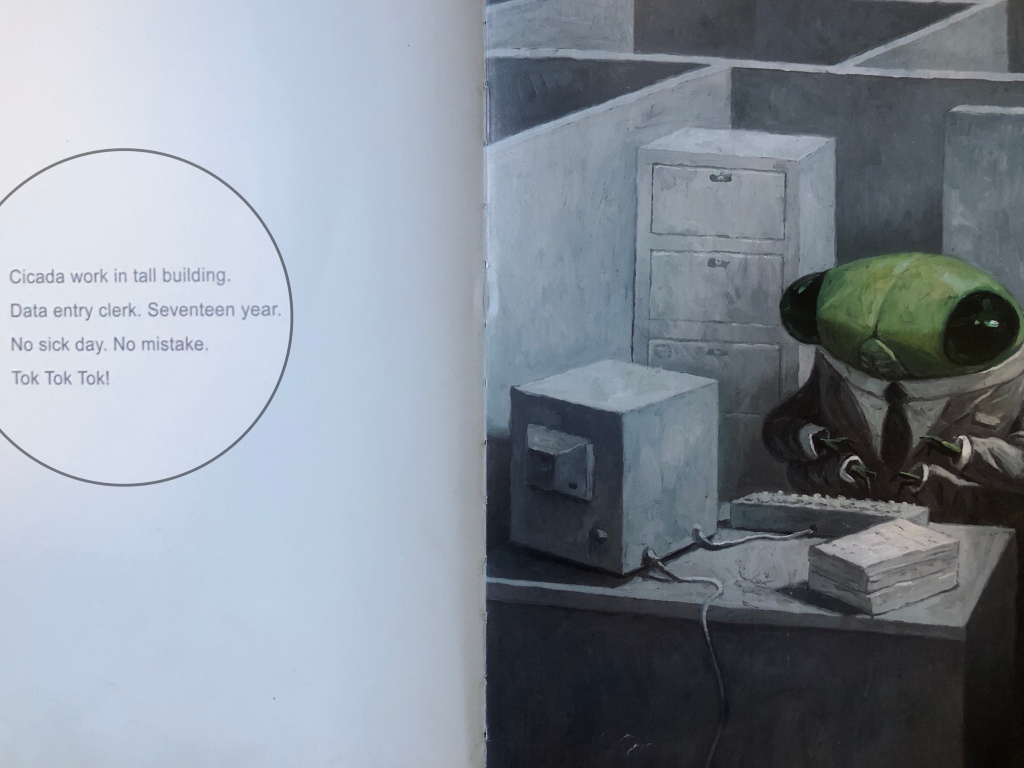
Diary of a Wombat – Jackie French and Bruce Whatley

Establishing a tone – Fun! Cheeky! Playful! Carefree! Diary of a Wombat oozes tone. The story is told as a series of diary entries of a wombat as she sleeps, eats, plays and terrorises a family through a week. From the carefree, relaxed tone at the beginning (‘Monday Morning: Slept. Afternoon: Slept. Evening: Ate grass. Scratched. Night: Ate grass. Slept.’) to the indignant rant later in the book (‘Why would I want carrots when I feel like rolled oats? Demanded rolled oats instead.’) author Jackie French shows she knows wombats – inside and out. (A quick Google search of her name will tell you and your students loads about years of Jackie’s encounters with wombats).
Taking risks to create voice – The author has definitely told this story in a new way – rather than a narrative about a wombat who bothers a family, she has used the diary format to tell it from the perspective of the wombat and in a way that lets that wombat’s voice come to life. This is a great text for demonstrating how we can think about unique ways we can tell a story.

Horrible Histories Series – Terry Deary and Martin Brown
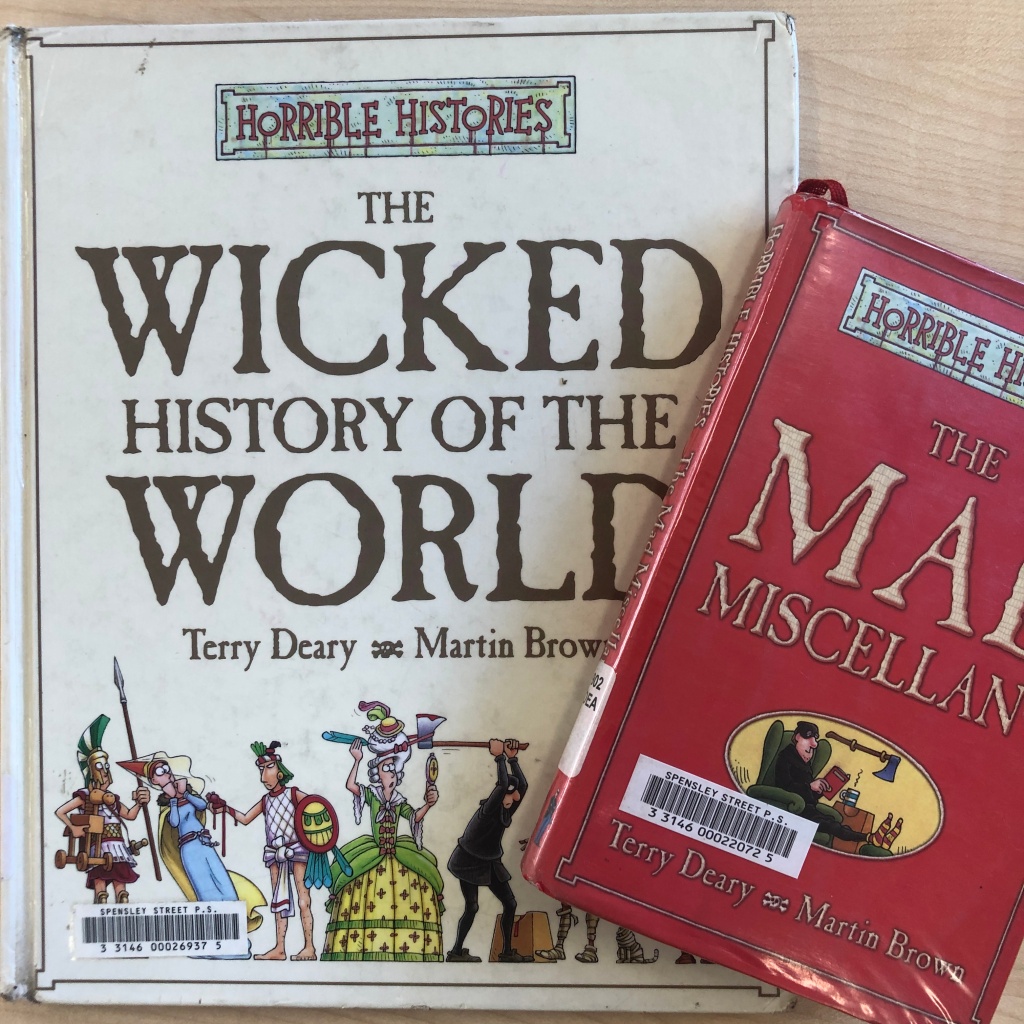
Establishing a tone – The Horrible Histories books are thick with humour and truth.It is clear that the author Terry Deary cares about his topic, knows a lot about it, and wants others to love it. There is a blunt honesty to this series, balanced with A LOT of jokes that make the (aptly-named horrible) content palatable and the tone fun and mischievous: ‘How did those prehistoric people survive and get to the top of the animal kingdom? By being more horrible than anything the world had ever seen.’
Conveying the purpose – Terry Deary makes clear in a lot of these books that reader should know about history, and that there are many perspectives on historical events and he incites the reader to read on, find out and see for themselves what to believe. The mix of narrative, factual and comic styles are engaging. These books are a great discussion starter on how an author knows what they want to share, and has to think about the best way to do it for their audience.
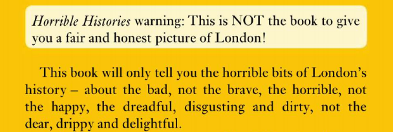
Creating a connection to the audience – By the writer speaking directly to the reader in Horrible Histories, the reader feels as though they are the direct recipient of Terry Deary’s passion for his topics. There are lots of additional features that create interaction with the reader, especially questions and quizzes.
Taking risks to create voice – Kids will notice how different these books are compared to most historical texts they encounter. As well as the joking style and tone of the books, the author is also distinctive in his choices of very informal, conversational words and phrases (‘Beware! The nasty Neanderthals became extinct around 30,000 BC. Not very surprising if they went around eating one another.’)
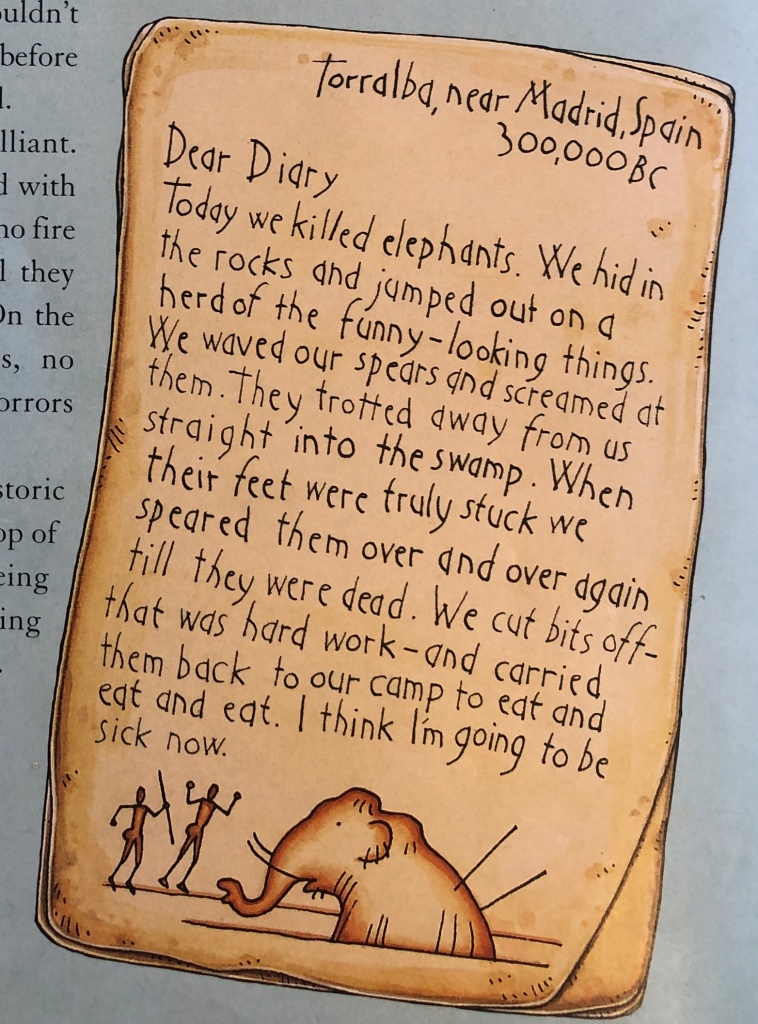
‘Em, I love your work. I am a massive fan of the 6+1 traits for writing and you convey your passion with fantastic mentor texts. Your enthusiasm and clarity has helped me get back to the way I love teaching. Thanks Ken
LikeLike
Hi Ken,
Wow – this is such a lovely comment. I’m so glad my little contribution has been useful! I’ll have to get going to and write a post on the other traits!
Emily
LikeLike